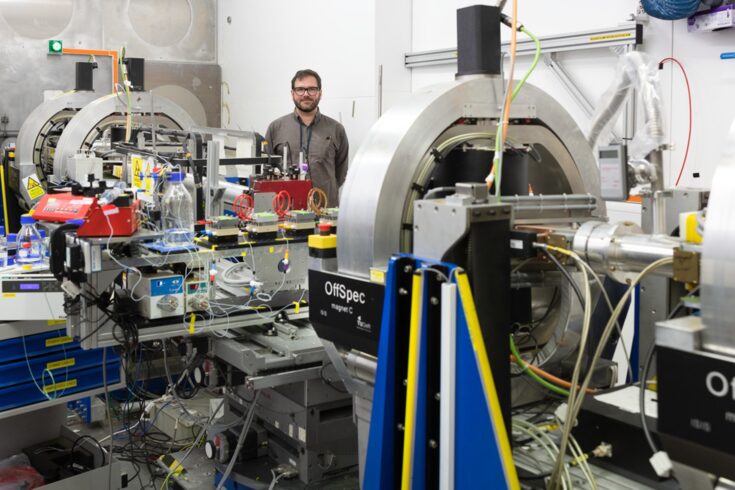The study, published today (2 June) in Science Advances, was led by Dr Luke Clifton at the Science and Technology Facilities Council (STFC) ISIS Neutron and Muon Source (ISIS) in Oxfordshire. They worked alongside partners at the University of Umea and European Spallation Source in Sweden.
It is the most recent in a series of research collaborations by this team, investigating the cellular proteins responsible for apoptosis.
A balance between life and death
Apoptosis is essential for human life, and its disruption can cause cancerous cells to grow and not respond to cancer treatment. It is regulated by two proteins with opposing roles known as Bax and Bcl-2.
In normal cells, the soluble Bax protein is responsible for the clearance of old or diseased cells, and when activated, it perforates the cell mitochondrial membrane to form pores that trigger cell death.
This can be offset by Bcl-2, which is embedded within the mitochondrial membrane, where it acts to prevent untimely cell death by capturing and sequestering Bax proteins.
In cancerous cells however, the survival protein Bcl-2 is overproduced, leading to uninhibited cell proliferation.
While this process has long since been understood to be essential to cancer development, the precise role that Bax and the mitochondrial membrane play has been unclear until now.
Crucial new insights
The team used a technique known as neutron reflectometry (conducted using the advanced ISIS Surf and Offspec instruments) which enabled them to study in real time how BAX interacts with lipids in the mitochondrial membrane.
This showed that when Bax creates pores in the membrane, it extracts lipids to form clusters on the mitochondrial surface via a two-stage process:
- Fast adsorption of Bax on the mitochondrial membrane surface.
- Simultaneous formation of membrane-destroying pores and Bax-lipid clusters.
This is the first time that scientists have found direct evidence of the involvement of mitochondrial lipids during membrane perturbing in cell-death initiated by Bax.
The finding builds on previous studies by the team on the molecular mechanism of membrane-bound Bcl-2 to inform a full understanding of the early stages of apoptosis.
Solving our greatest health challenges
Dr Luke Clifton, STFC ISIS scientist and lead author, explains:
This work has relevance not only to our understanding of fundamental mammalian cell processes but to our understanding of cancer cells.
In order to develop effective cancer treatments, we need to characterise every step of the process by which cancerous cells spread so that we can identify opportunities to intervene in this process.
This research has provided another piece of the jigsaw and has moved us one step closer to tackling cancer before it takes hold.
It also really shows the capabilities of neutron reflectometry in structural studies on membrane biochemistry.
Professor Gerhard Gröbner, University of Umeå and co-lead author says:
The unique findings here will not only have a significant impact in the field of apoptosis research but will also open gateways for exploring Bax and its relatives as interesting targets in cancer therapy such as by tuning up their cell-killing potential.
Looking to the future
Continued research is already planned at ISIS to probe this mechanism further.
It is hoped that this will yield new insights into potential targets for pharmaceuticals such as the newly characterised Bax-lipid clusters which could provide a new focus for medical research.
You can read the full paper now on the Science Advances website.

